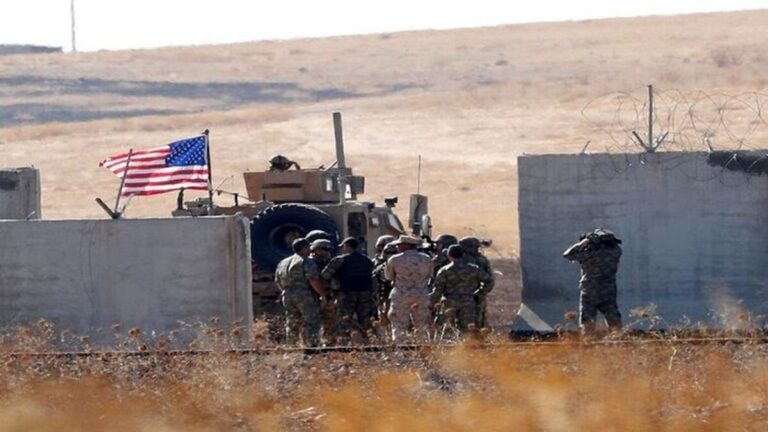The US conducted retaliatory strikes in the Middle East in response to the deaths of three American soldiers killed in a drone attack in Jordan by Iran-backed militants.
“US military forces struck more than 85 targets, with numerous aircraft to include long-range bombers flown from United States,” the US Command Center said on Friday. “The airstrikes employed more than 125 precision munitions.”
Command centers, intelligence centers, rockets, and missiles, and unmanned aired vehicle storages and munition supply chain facilities of militia groups were struck in the attack, it added.
The decision to launch what US officials have promised to be “multi-tiered” attacks on Iran-backed militias marks a significant escalation in a volatile regional power struggle that pits the US against Iran and a network of allied militias in the Middle East.
The strikes were reported to have begun around the same time as Joe Biden and the first lady participated in a dignified transfer of the three soldiers back in the US on Friday.
An NSC spokesperson said later there was “no connection” between the two events.
US airstrikes were inevitable, says ex-British envoy
Kim Darroch, the former British ambassador to the US, said the airstrikes in the Middle East were “inevitable” ahead of the presidential elections.
Lord Darroch told the BBC that the Joe Biden administration did not want to seem “soft” on these military issues.
“A substantial American response was inevitable,” he said, adding that the UK government must have received “some sort of warning”.
White House says Iraq was informed ahead of strikes
National Security Council spokesperson John Kirby said the US informed Baghdad about the retaliatory airstrikes targetting pro-Iran militants in Iraq.
“We did inform the Iraqi government prior to the strikes,” he said, shortly after Baghdad condemned the strikes, calling it a “violation of Iraqi sovereignty”.
Following the strikes, an Iraqi military spokesperson said: “The outcomes will have severe implications on the security and stability in Iraq and the surrounding region.”
About 26 major sites housing pro-Iranian groups, including weapon depots, were destroyed in Friday’s strikes, Syrian Observatory for Human Rights chief Rami Abdel Rahman said.
A weapons warehouse and a command centre belonging to pro-Iranian groups were also targeted in western Iraq, along the Syrian border, according to AFP.
The US military has not provided an estimate for the number of deaths in the strikes.
John Kirby, the National Security Council spokesperson, said the US military selected the targets carefully “to avoid civilian casualties and based on clear, irrefutable evidence that they were connected to attacks on US personnel in the region”.
President Joe Biden said the military response in Syria and Iraq would “continue at times and places of our choosing”.
He added: “Let all those who might seek to do us harm know this: If you harm an American, we will respond.”
He and other top US leaders had been saying for days that any American response wouldn’t be just one hit but a “tiered response” over time.
A statement from the US Central Command (CENTCOM) confirmed the airstrikes had take place at midnight local time in Iraq and Syria against Iran’s Islamic Revolutionary Guards Corps (IRGC) Quds Force and affiliated militia groups.
“US military forces struck more than 85 targets, with numerous aircraft to include long-range bombers flown from United States. The airstrikes employed more than 125 precision munitions,” he statement, posted online, read.
“The facilities that were struck included command and control operations, centers, intelligence centers, rockets, and missiles, and unmanned aired vehicle storages, and logistics and munition supply chain facilities of militia groups and their IRGC sponsors who facilitated attacks against US and Coalition forces.”
Meanwhile, the UK-based Syrian Observatory for Human Rights reported that 18 militants were killed in the Syria strikes.
Syrian local media reported there were casualties but did not give a number.
Many Killed As US forces hit iran-backed Targets In Iraq, Syria
